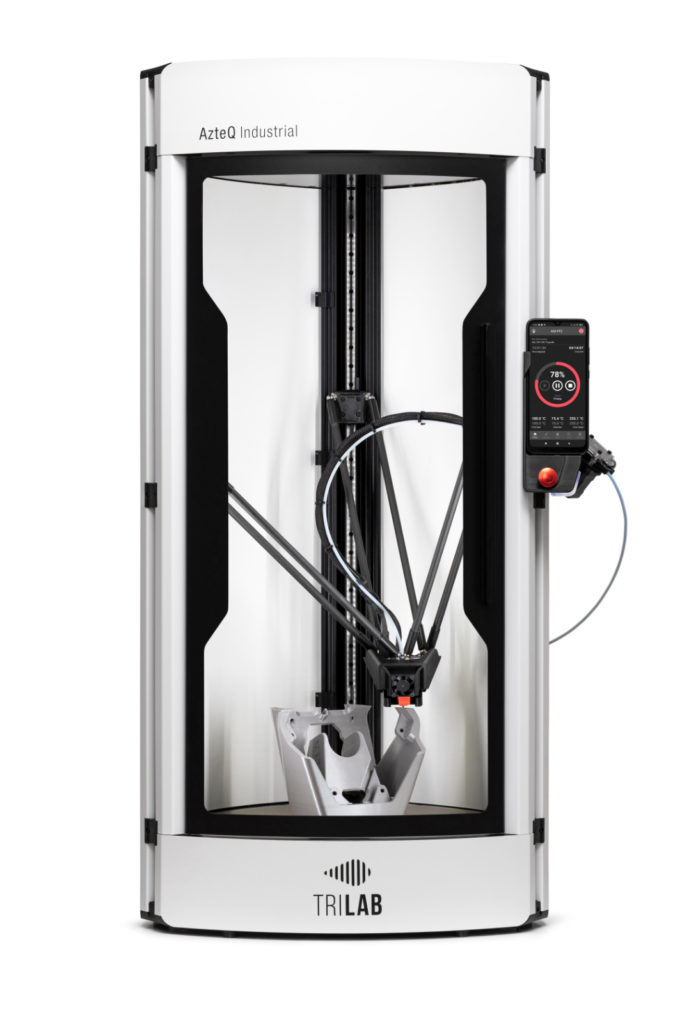
“Trilab produces high-quality 3D printers for the corporate sector and their brand is very well established in this area. Our machines are aimed more towards hobbyists and they are open-source. This approach may be limiting in corporate and industrial sectors,” Prusa Research founder Josef Průša stated. “We found that we complement each other perfectly. We have a great B2C system – without any intermediaries, we’re capable of distributing our 3D printers and materials to the entire world directly from our HQ in Prague. Trilab has business partners not only in the EU but also in Japan, Izrael, Canada, and Australia. Their business experience is completely different than ours,”
 I’m so frustrated that people don’t understand just how formidable Prusa Research is as a competitor. Their QA is amazing, as is the overall quality of their systems. At the same time, they deliver products with extremely good value for the money. They survive and thrive in a desktop segment overrun with people that copy their printer and sell if for $200. If they can do well in that market, then eventually, they’ll do well in your market.
I’m so frustrated that people don’t understand just how formidable Prusa Research is as a competitor. Their QA is amazing, as is the overall quality of their systems. At the same time, they deliver products with extremely good value for the money. They survive and thrive in a desktop segment overrun with people that copy their printer and sell if for $200. If they can do well in that market, then eventually, they’ll do well in your market.“At the beginning of 2021, we realized that if we were to expand into more markets and accelerate our growth, we needed a strategic partner. After months of negotiations with many foreign companies, we came to a somewhat surprising conclusion: the best solution is to join forces with another Czech company – PrusaResearch,”Trilab CTO Vojtěch Tambor stated, “Advanced materials, which Josef Průša develops under the Prusament brand, are a perfect match for our 3D printers – and there’s great potential for future development. Already, our customers are excited to see 3D prints made on our machines with Prusament PC Blend,”
Subscribe to Our Email Newsletter
Stay up-to-date on all the latest news from the 3D printing industry and receive information and offers from third party vendors.
You May Also Like
Profiling a Construction 3D Printing Pioneer: US Army Corps of Engineers’ Megan Kreiger
The world of construction 3D printing is still so new that the true experts can probably be counted on two hands. Among them is Megan Kreiger, Portfolio Manager of Additive...
US Army Corps of Engineers Taps Lincoln Electric & Eaton for Largest 3D Printed US Civil Works Part
The Soo Locks sit on the US-Canadian border, enabling maritime travel between Lake Superior and Lake Huron, from which ships can reach the rest of the Great Lakes. Crafts carrying...
Construction 3D Printing CEO Reflects on Being Female in Construction
Natalie Wadley, CEO of ChangeMaker3D, could hear the words of her daughter sitting next to her resounding in her head. “Mum, MUM, you’ve won!” Wadley had just won the prestigious...
1Print to Commercialize 3D Printed Coastal Resilience Solutions
1Print, a company that specializes in deploying additive construction (AC) for infrastructure projects, has entered an agreement with the University of Miami (UM) to accelerate commercialization of the SEAHIVE shoreline...





























